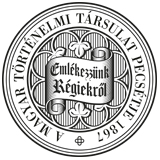Századok – 2013
MŰHELY - Soós László: Hatásköri vita a rendőrség és a katonaság között (1903 október 6.) III/783
HATÁSKÖRI VITA A RENDŐRSÉG ÉS KATONASÁG KÖZÖTT (1903. OKTÓBER 6.) 791 nokságához áttette.” Továbbá „A Kossuth-szobornak 1903. évi október hó 25. és 26. közti éjjelen polgári egyének által katonák nevében történt megkoszorúzása tárgyában ismeretlen tettesek ellen rágalmazás miatt folyamatba tett nyomozást a kir. ügyész megszüntette, mert a tettesek kinyomozhatok nem voltak.”35 A szegedi polgárok és a katonaság közötti összetűzés során elkövetett erőszakos cselekmények miatt 23 személy letartóztatására került sor. Ügyüket a Szegedi Kir. Törvényszék 1903. november 9-én és 10-én tárgyalta, és a hatóság elleni bűntett vádját vétségre enyhítve 22 személyt egy naptól egy hónap és 5 napig terjedő elzárásra ítélt, egy nőt pedig felmentettek.36 Az előzetes letartóztatásban eltöltött idő beszámításával az ítélet kihirdetését követően minden vádlott hazatérhetett. DISPUTE OF COMPETENCE BETWEEN THE POLICE AND THE ARMY (6 OCTOBER 1903) by László Soós (Summary) The conflict between the inhabitants of Szeged and the commanders of the headquarters of the 7th army corps stationed there, who were subjected to the ministry of defence, was caused by the placing by unidentified persons of a wreath on the statue of Kossuth in the name of the soldiers during the celebration on 6 October 1903. Since it was forbidden for soldiers to participate in political manifestations, general Géza Csalány ordered the removal of the wreath from the statue. The action of removal led to the use of arms on the part of the military, killing one and wounding several people, whereas the civilians also wounded some soldiers by stoning. Prime minister Károly Khuen-Héderváry, who also headed the ministry of domestic affairs, protested on 23 October against the intervention of the military, and urged for the punishment of the commander who had ordered the action against the civilians. The common minister of defense, on the other hand, whose response of 9 November was already delivered to the new prime minister, István Tisza, who shared the opinion of his predecessor, suggested that the commander of the police should be punished for his failure to take preventive measures. The real question was whether the commander of a unit subjected to the common minister of defense had the right to proceed against civilians independently from the police. The dispute over competences, which drew on until the end of March 1904, finally ended with a compromise. The minister of defence, Heinrich von Pitreich ordered that in case of conflict involving the military the commanders of army corps should turn directly to the minister of domestic affairs instead of taking independent action, whereas, with regard to the events at Szeged, both ministers let the respective persons they blamed for the eruption of the conflict go unpunished. 35 MOL K 149. 1904. 4. tétel. 39. sz. Plósz Sándor igazságügy-miniszter átirata a Belügyminisztérium vezetésével megbízott Tisza István miniszterelnök részére. 1904. jan. 14. A főügyész jelentése 1904. jan. 7-én készült. 36 MOL K 149. 1904. 4. tétel. 1015. sz. Plósz Sándor igazságügy-miniszter átirata Tisza István miniszterelnök részére. 1903. nov.18.
